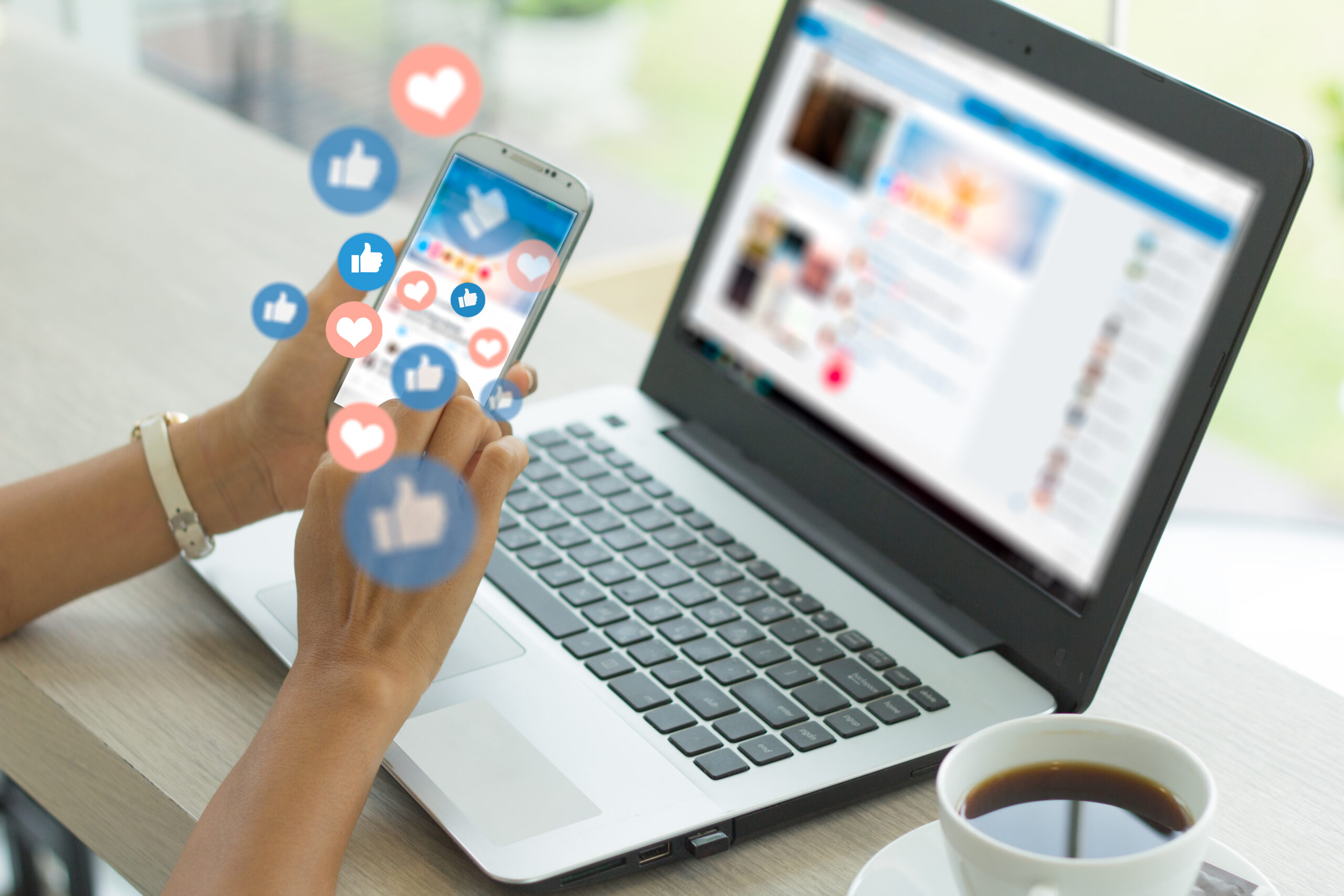In our increasingly digital world, social media has become an integral part of daily life, influencing how we communicate, perceive ourselves, and interact with others. Platforms like Facebook, Instagram, and Twitter offer constant streams of social interaction and validation, but how exactly do these interactions affect our brains?
The Dopamine Effect: A Double-Edged Sword
At the heart of social media’s impact on the brain is dopamine, a neurotransmitter associated with pleasure and reward. Whenever we receive a notification, like, or comment on social media, our brain releases dopamine, creating a sense of satisfaction and reinforcing the behavior of checking our devices. This mechanism is strikingly similar to how addictive substances like cocaine influence the brain, although to a lesser degree.
According to a study highlighted by Science in the News from Harvard University, the dopamine response triggered by social media interactions can lead to habitual and sometimes compulsive use. The anticipation of receiving social validation drives users to frequently check their accounts, much like the anticipation in gambling keeps players engaged. This constant cycle of seeking and receiving validation can create a dependency on social media, making it difficult for users to disconnect (1).
Social Feedback and Emotional Processing
The emotional impact of social media interactions is profound, particularly in adolescents who are more sensitive to social evaluation. A study published in Frontiers in Human Neuroscience used functional MRI to examine how adolescents’ brains respond to social feedback on platforms resembling Facebook. The researchers found that positive feedback activated brain regions associated with reward and emotional processing, such as the insula and medial prefrontal cortex (MPFC). Conversely, negative feedback and social rejection triggered activity in regions associated with emotional pain and distress, including the anterior cingulate cortex (ACC) and lateral prefrontal cortex (LPFC) (2).
This heightened sensitivity to social feedback can have significant implications for mental health. Adolescents who experience frequent negative interactions or social rejection on social media are at increased risk of developing anxiety and depression. The constant need for social validation and fear of missing out (FOMO) can exacerbate these emotional responses, leading to a cycle of increased social media use and deteriorating mental health.
The Dark Side: Depression and Anxiety
The link between social media use and mental health issues is well-documented. A systematic review published in the Adolescent Research Review explored the relationship between social media and depressive symptoms in young people. The review found that negative social comparisons on platforms like Facebook can lead to rumination, which increases the risk of depression. Additionally, cyberbullying and online harassment have been linked to severe mental health issues, including anxiety, low self-esteem, and suicidal thoughts.
The pressure to present a curated and idealized version of oneself online can lead to feelings of inadequacy and dissatisfaction. For young people, this can be particularly damaging as they navigate the challenges of adolescence. The study also noted that girls are more likely to experience body image concerns due to social media use, leading to eating disorders and poorer mental health outcomes (3).
The Bright Side: Social Support and Community Building
Despite these challenges, social media also offers significant benefits, particularly in terms of social support and community building. Platforms can serve as valuable networks for individuals facing mental health issues, providing opportunities for self-disclosure, emotional support, and the sharing of coping strategies.
Research highlighted by the Journal of Technology in Behavioral Science indicates that online communities can help alleviate feelings of isolation and loneliness. For example, individuals with serious mental illnesses have used online forums to discuss symptoms, seek advice, and form supportive friendships. These online interactions can foster a sense of belonging and provide a much-needed outlet for individuals to share their experiences and receive support from others who understand their challenges (4).
The Neuroscience of Reward and Learning
Social media platforms are adept at leveraging the brain’s reward system to keep users engaged. The use of variable reward schedules, like those found in gambling, keeps users hooked by delivering rewards unpredictably. This strategy exploits the brain’s reward prediction error mechanism, where unexpected rewards trigger a stronger dopamine response. Over time, this can create a compulsion to check social media frequently, as users seek the unpredictable thrill of social validation.
Balancing Act: Managing Social Media Use
Given the complex and multifaceted impact of social media on the brain, it’s crucial to find a balance in its use. While these platforms offer opportunities for connection and support, they also pose risks to mental health and cognitive development.
To manage social media use effectively, experts recommend setting boundaries, such as limiting screen time, turning off non-essential notifications, and scheduling regular digital detoxes. Mindful use of social media, where individuals are conscious of their interactions and the time spent online, can help mitigate some of the negative effects. Encouraging positive online behaviors and fostering supportive communities can also enhance the benefits of social media while minimizing its risks.
Conclusion
The impact of social media on the brain is a complex interplay of neural, emotional, and cognitive processes. While the dopamine-driven reward system can lead to habitual use and emotional dependency, social media also offers platforms for support and community building. Understanding these dynamics is crucial for developing healthier social media habits and mitigating potential risks. As we continue to navigate the digital landscape, balancing our online interactions with mindful and intentional use will be key to harnessing the benefits of social media while protecting our mental well-being.
By staying informed about how these technologies affect our brains, we can make more conscious choices about our social media use and encourage a healthier, more balanced digital life.
To learn more about how to best care for your brain health, visit us at mybraindr.com!
(1). Admin. “Dopamine, Smartphones and You: A Battle for Your Time – Science in the News.” Science in the News, 4 Feb. 2021, sitn.hms.harvard.edu/flash/2018/dopamine-smartphones-battle-time.
(2). Wikman, Patrik, et al. “Brain Responses to Peer Feedback in Social Media Are Modulated by Valence in Late Adolescence.” Frontiers in Behavioral Neuroscience, vol. 16, May 2022, https://doi.org/10.3389/fnbeh.2022.790478
(3). McCrae, Niall, et al. “Social Media and Depressive Symptoms in Childhood and Adolescence: A Systematic Review.” Adolescent Research Review, vol. 2, no. 4, Mar. 2017, pp. 315–30. https://doi.org/10.1007/s40894-017-0053-4.
(4). Naslund, John A., et al. “Social Media and Mental Health: Benefits, Risks, and Opportunities for Research and Practice.” Journal of Technology in Behavioral Science, vol. 5, no. 3, Apr. 2020, pp. 245–57. https://doi.org/10.1007/s41347-020-00134-x.





